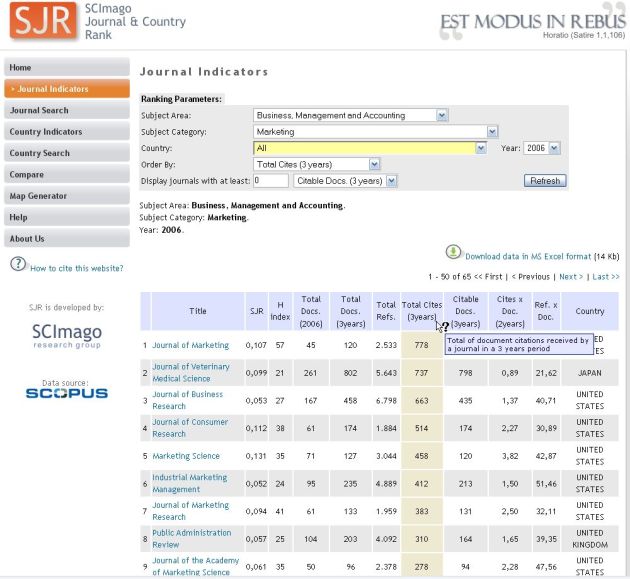Another new Citation Impact tool on Scopus data: Scimago
January 3, 2008 Leave a comment
Declan Butler, Free journal-ranking tool enters citation market, Nature News, January 2, 2008. Excerpt:
A new [OA] Internet database lets users generate on-the-fly citation statistics of published research papers for free. The tool also calculates papers’ impact factors using a new algorithm similar to PageRank, the algorithm Google uses to rank web pages. The open-access database is collaborating with Elsevier, the giant Amsterdam-based science publisher, and its underlying data come from Scopus, a subscription abstracts database created by Elsevier in 2004.
The SCImago Journal & Country Rank database was launched in December by SCImago,
Thomson is also under fire from researchers who want greater transparency over how citation metrics are calculated and the data sets used. In a hard-hitting editorial published in Journal of Cell Biology in December, Mike Rossner, head of Rockefeller University Press, and colleagues say their analyses of databases supplied by Thomson yielded different values for metrics from those published by the company (M. Rossner et al . J. Cell Biol. 179, 1091–1092 ; 2007). Thomson, they claim, was unable to supply data to support its published impact factors. “Just as scientists would not accept the findings in a scientific paper without seeing the primary data,” states the editorial, “so should they not rely on Thomson Scientific’s impact factor, which is based on hidden data.”
It also includes a new metric: the SCImago Journal Rank (SJR).
The familiar impact factor created by industry leader Thomson Scientific, based in Philadelphia, Pennsylvania, is calculated as the average number of citations by the papers that each journal contains. The SJR also analyses the citation links between journals in a series of iterative cycles, in the same way as the Google PageRank algorithm. This means not all citations are considered equal; those coming from journals with higher SJRs are given more weight. The main difference between SJR and Google’s PageRank is that SJR uses a citation window of three years. See Table 1
I tested some testing on the marketing research subfield of business and management (see screenshot). I ranked the list according to total cites over the last 3 years.

SJR versus JCR:
Let’s take the highest ranked journal form Scimago: Journal of Marketing (sjr 0,107) and compare it with the JCR citation trend. JOM has the higest impactfactor i the ISI subjectcategory Business for 2006. So in general this would mean that the best journals come up equally. But it remains a situation of comparing apples and oranges because the subject categories differ between Scopus and ISI. So the relative position of a journal is different in the two measure systems.



